5 Places That Stucco Leaks and Homeowners Never Look


David Jones
Senior Contributor
David Jones is a seasoned home inspector and construction expert with over 20 years of experience. He specializes in structural integrity, foundation issues, and detailed home safety assessments.
View Full Profile →
Stucco leaks and water penetrating into a stucco wall is a serious problem. It can cause mold, wood rot, soak the insulation, and result in structural damage. There are main 5 places that stucco leaks and homeowners never look. Places that homeowners should be aware of and do a quick check each year. If these places go unchecked, there may be costly repairs needed in the future.
#1 spot for stucco leaks: Planters
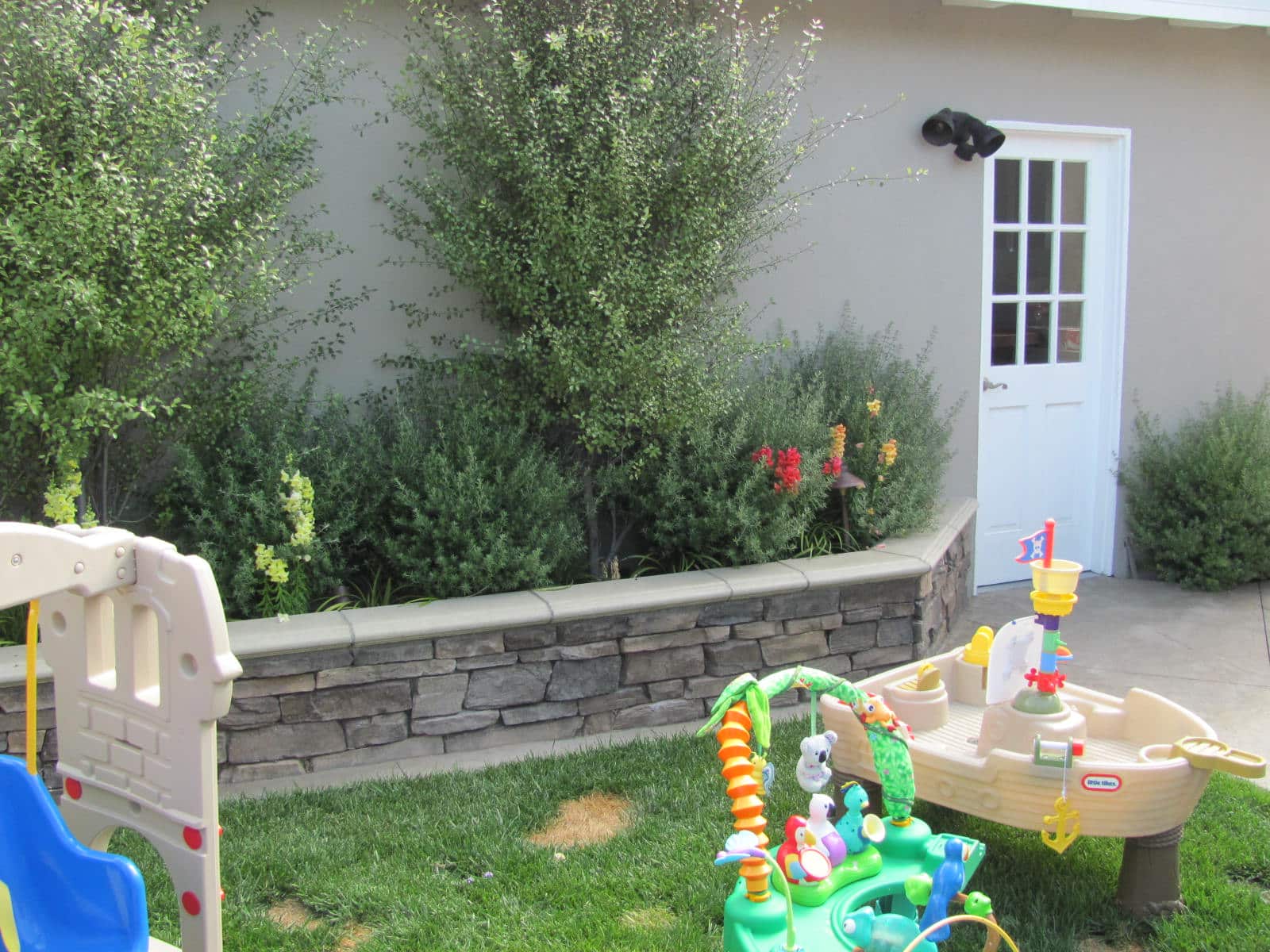
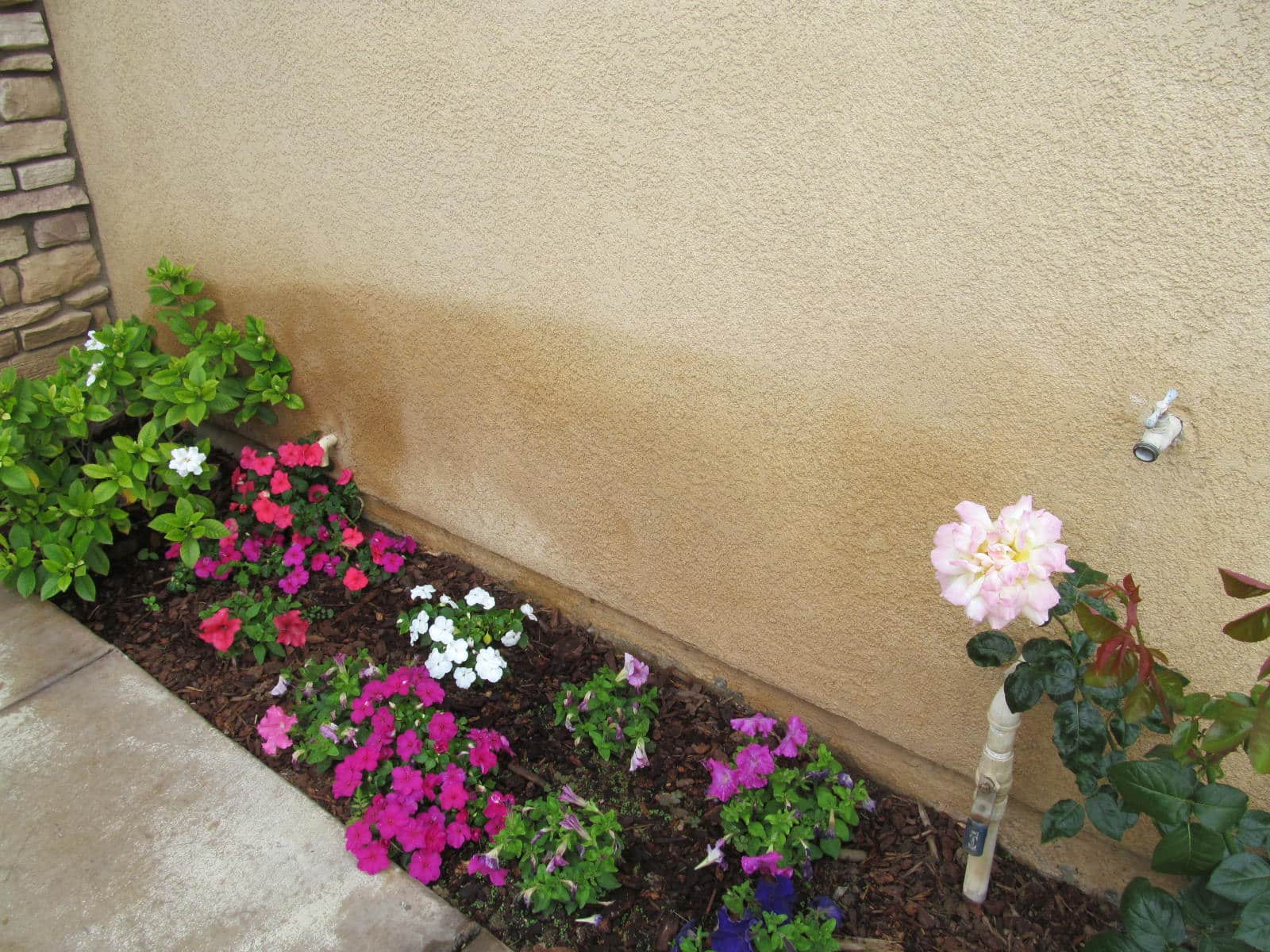
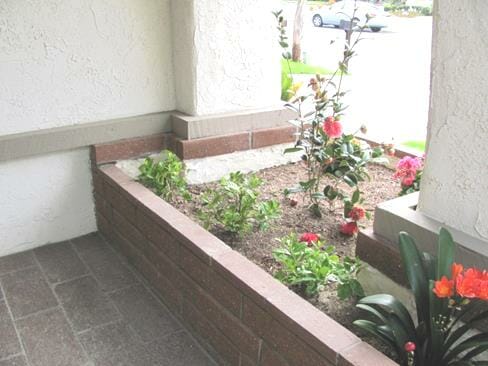
Planters against a stucco wall are one of the more common causes of blocked weep screed, mold, wood rot, and moisture intrusion into a wall. Many planter boxes do not have a wall, i.e a back wall, that separates the planter soil from the wall of the home, and most of these types of planters are not built per code.
An unsuspecting culprit of moisture entering into a stucco wall:
- The soil in a planter often covers and blocks the weep screed, thus, trapping water in the wall.
- Many planters have sprinkler systems in them that causes moisture to penetrate a wall or overly soak the soil in the planter box.
- No drain in the planter. If a box planter not have a drain or way for rainwater and sprinkler water to escape, then the water gets trapped and penetrates into the wall.
Building codes and planters
The majority of building jurisdictions have codes regarding box-type planters against a homes wall. The most common code is the IRC, International Residential Code, which most states have adopted.
If a planter box is against a home’s wall, the planter box should have a back wall so that soil will not be against the wall of the house. There should be a minimum air space of 2 inches. If the air space between the planters’ back wall and the home’s wall is less than 6 inches, then it is required to have a flashing over that space so that leaves and debris can not accumulate in the space; the smaller the space, the more difficult it is to clean out. Also, leaves and similar debris attracts insects, ants and other pest that may be harmful to the house.
#2 Light Fixtures
Unsealed exterior light fixtures is a very common location for water to penetrate a wall. Many of the fixtures have gaps or are not sealed properly. On new homes building inspectors generally inspect the electrical wiring to see if it is properly wired and safe but seldom inspect the fixture to see if it is properly sealed against moisture intrusion.
The most common issue are:
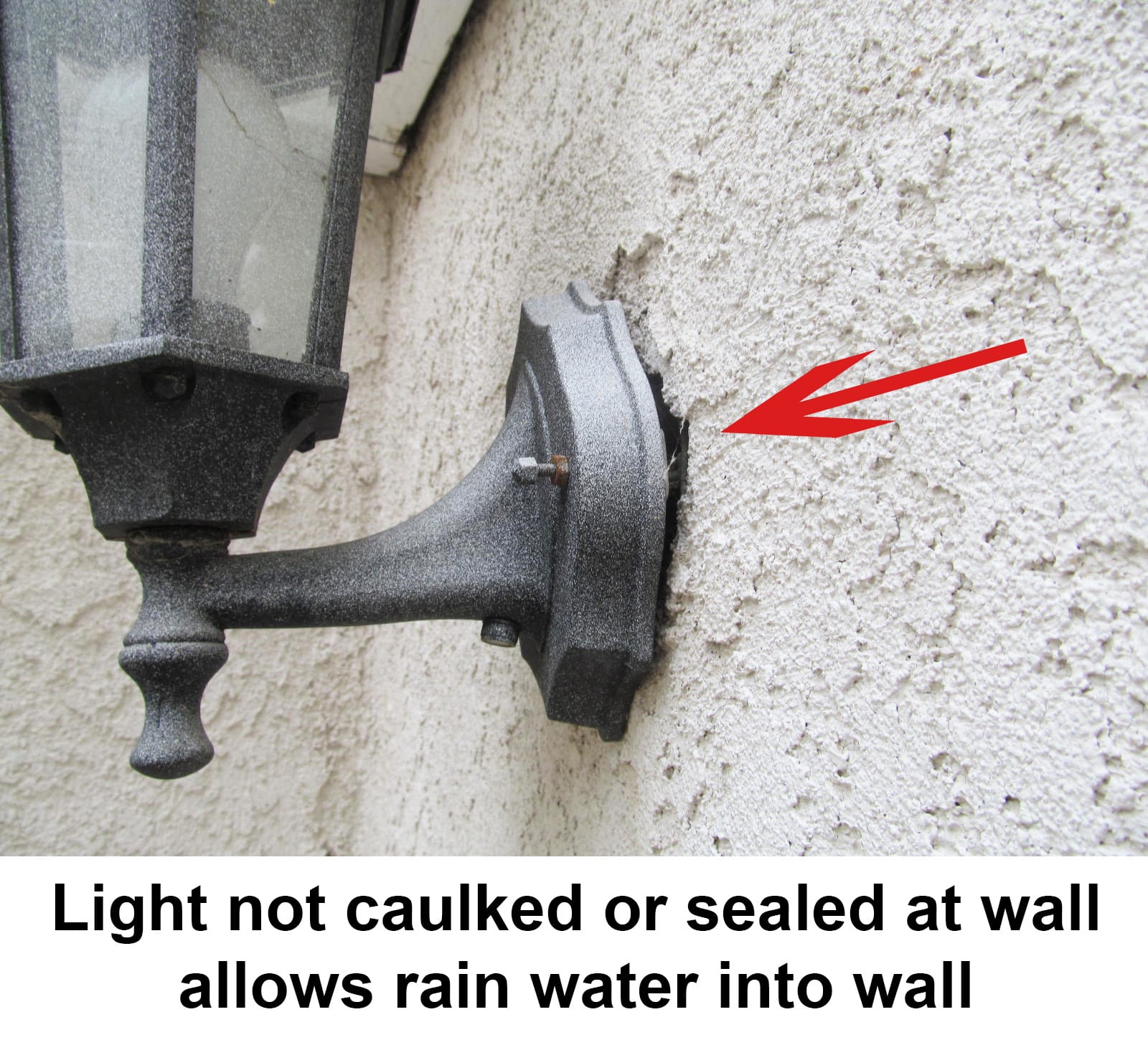
- The fixture is not caulked and there is a gap that allows moisture to penetrate.
- The fixture has been caulked, but over time the caulking has dried out, cracked, or deteriorated. If so, the old caulking should be removed, and the fixture re-caulked with new caulking. Remember to use a quality, flexible exterior grade of caulking.
- Light fixtures or electrical boxes designed for exterior use may have a rubber type neoprene seal or cork like gasket. If so, it may be damaged or deteriorated and allowing water in. The seal should be replaced.
Remember there is a safety concern should moisture reach the electrical wires where they are connected to one another, i.e. into the wire nuts connecting the wires.
While checking exterior light fixtures, you may want to check exterior outlet boxes and look for any gaps or damaged caulking at hose bibs, dryer vents, mailbox slots in the wall, as well as around all doors and windows.
#3 Shrubbery, Ivy, and clinging vines on stucco walls
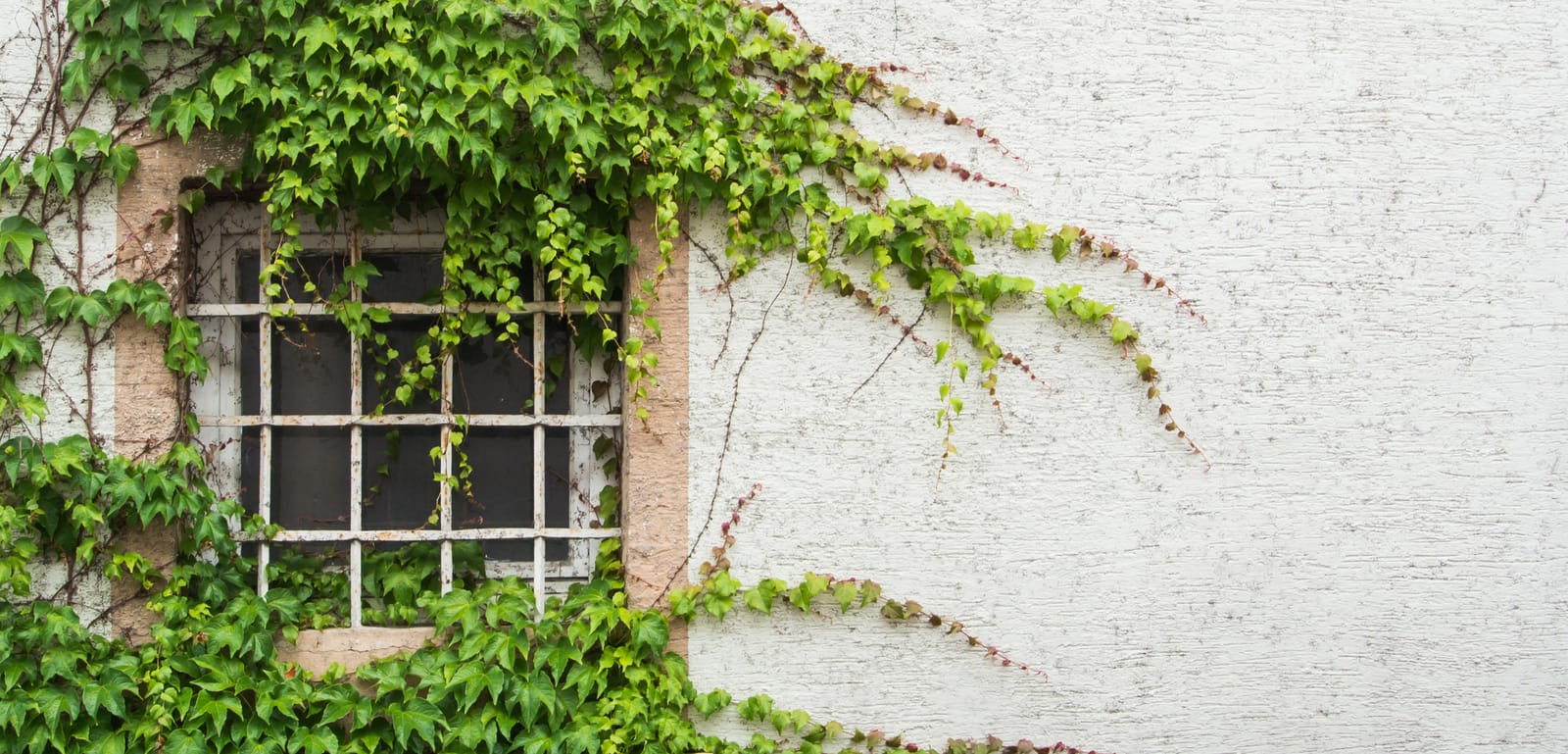
When a wall has shrubbery, Ivy, and clinging vines, there may be hidden cracks and damage. Homeowners and buyers should be aware of this; however, it often gets overlooked. When there are cracks or other damage, then water may penetrate the stucco and go undetected for many years.
Many of these vines climb via adhesive pads or aerial roots, depending on the type of species. There are some species have twining stems or tendrils and need a trellis to wrap around: these usually do much less damage to a stucco wall than self-clinging vines. However, all vines tend to hides cracks and damage where moisture may penetrate the wall.
Seller got hit with a $9,500 bill
The home sellers were delighted that they found a lovely couple who wanted to buy their home, and their offer was great. The buyer wanted only a few things fixed but wanted to paint the house a different color. So, they asked the sellers to remove the clinging Ivy and to patch any damaged areas so the house would be ready for new coat of paint. The sellers happily agreed, and they opened escrow with the buyers immediately; then they hired a contractor to remove the Ivy or clinging vines and do the appropriate patching.
Here is where things went wrong. As the Ivy was being removed, it started pulling much of the stucco’s finish coat off, leaving many areas damaged, plus there were a number of small hairline cracks where the ivy’s’ roots had penetrated. These proved to be very difficult when trying to remove broken off roots in the hairline cracks so that patching could be done properly.
The final cost to the sellers was a little over $9,500.
Ivy covered homes are charming and picturesque, but ………
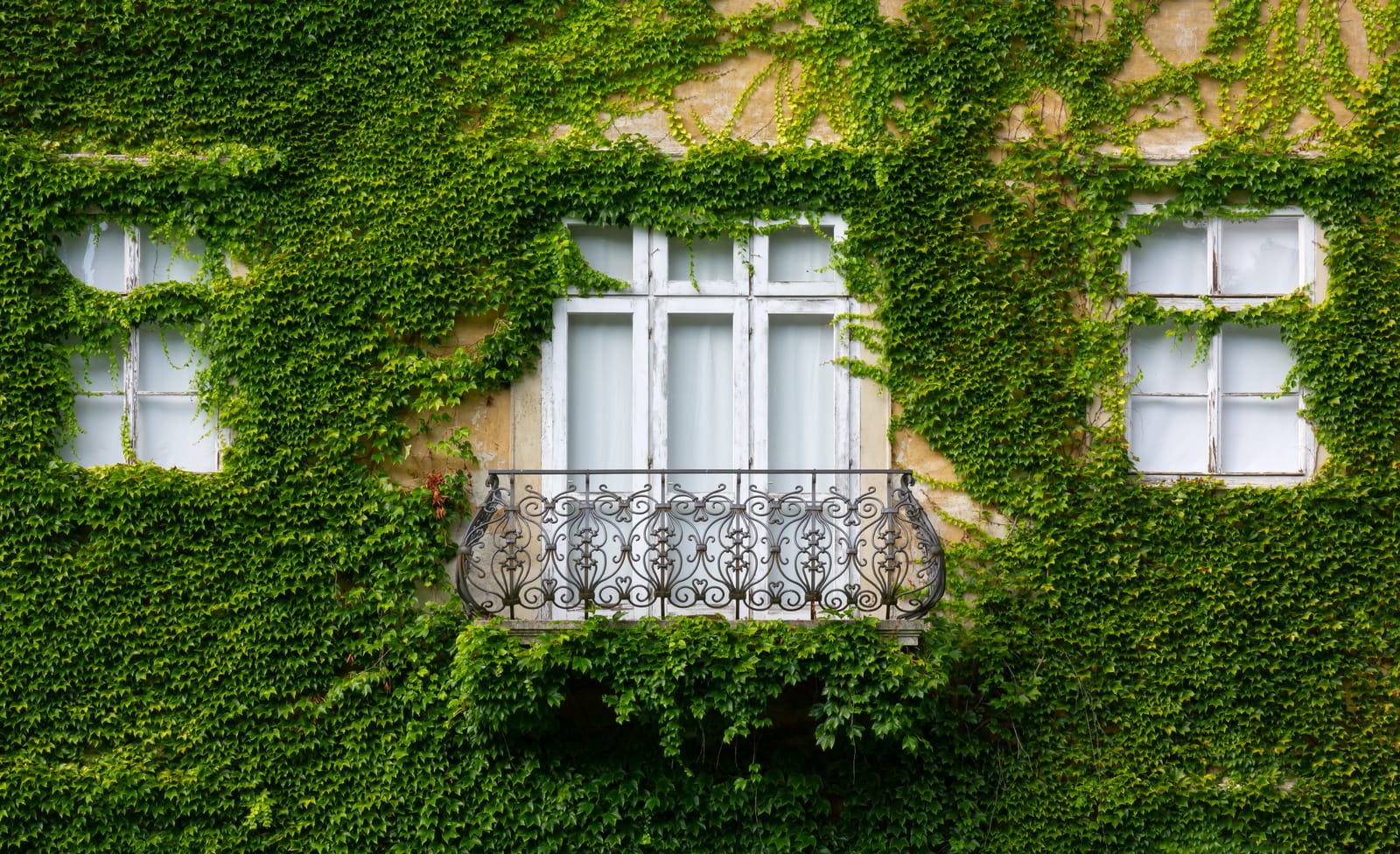
It important to note that with stucco homes, homeowners should realize that Ivy or clinging vines may block sunlight and wind, which influences how quickly a stucco wall may dry out when soaked with water. The reason is that traditional stucco is porous and is designed to breath. If the stucco does not dry out properly, then it can produce an environment for mold and mildew to develop. Therefore, it is wise to keep an eye open for possible problems and to have a good maintenance program, especially in climates zones that get lots of rain and are cool.
** Shrubbery and trees**
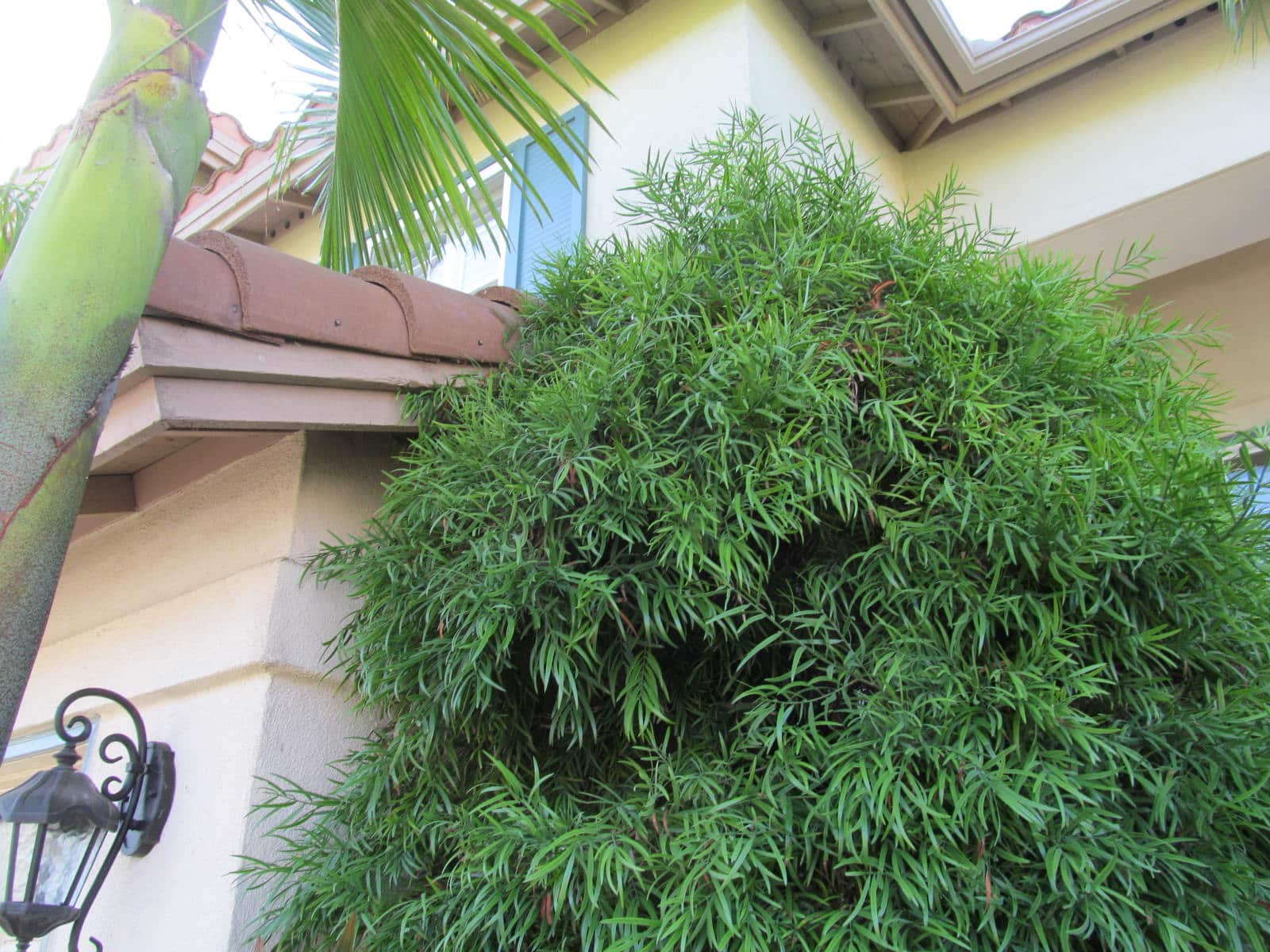
It is often hard to see behind shrubbery or trees that are very close to a house or against the homes wall, yet problems may be lurking in these areas. Checking these areas may reveal cracks, damage and mold that no one was aware of.
When branches, limbs and other shrubbery rubs a wall, especially in storms, damage may occur, and moisture may invade the wall. Keeping shrubbery or trees trimmed and a good distance away from a wall is wise. Also, remember that tree roots may cause damage to a home’s foundation, including the risk of subsidence over time.
#4 Ledger boards, balconies decksand stucco leaks
Ledgers are often an overlooked source of moisture penetration into a stucco wall, especially on older houses or when a patio deck (or cover) or a balcony has been added to a newer house.
The two main reasons for a deck, balcony, or patio cover to fail or a deck to collapse is improper fastening of a ledger to a home’s structural framing or water damage to the home’s structural framing that the ledger is attached to.
What is a ledger?
They are usually a horizontal wood board or beam that is attached to a home’s exterior wall. The wall could be a stucco wall and the size of the ledger board or beam often ranges between a 2 x 6 to a 2 x 12 or a 4 x 6 to a 4 x10. The ledger board helps carry the weight of a patio deck or cover, or of a balcony. These ledger boards or beams are usually attached to the homes framing with bolts or lag screws, usually with a hex head.

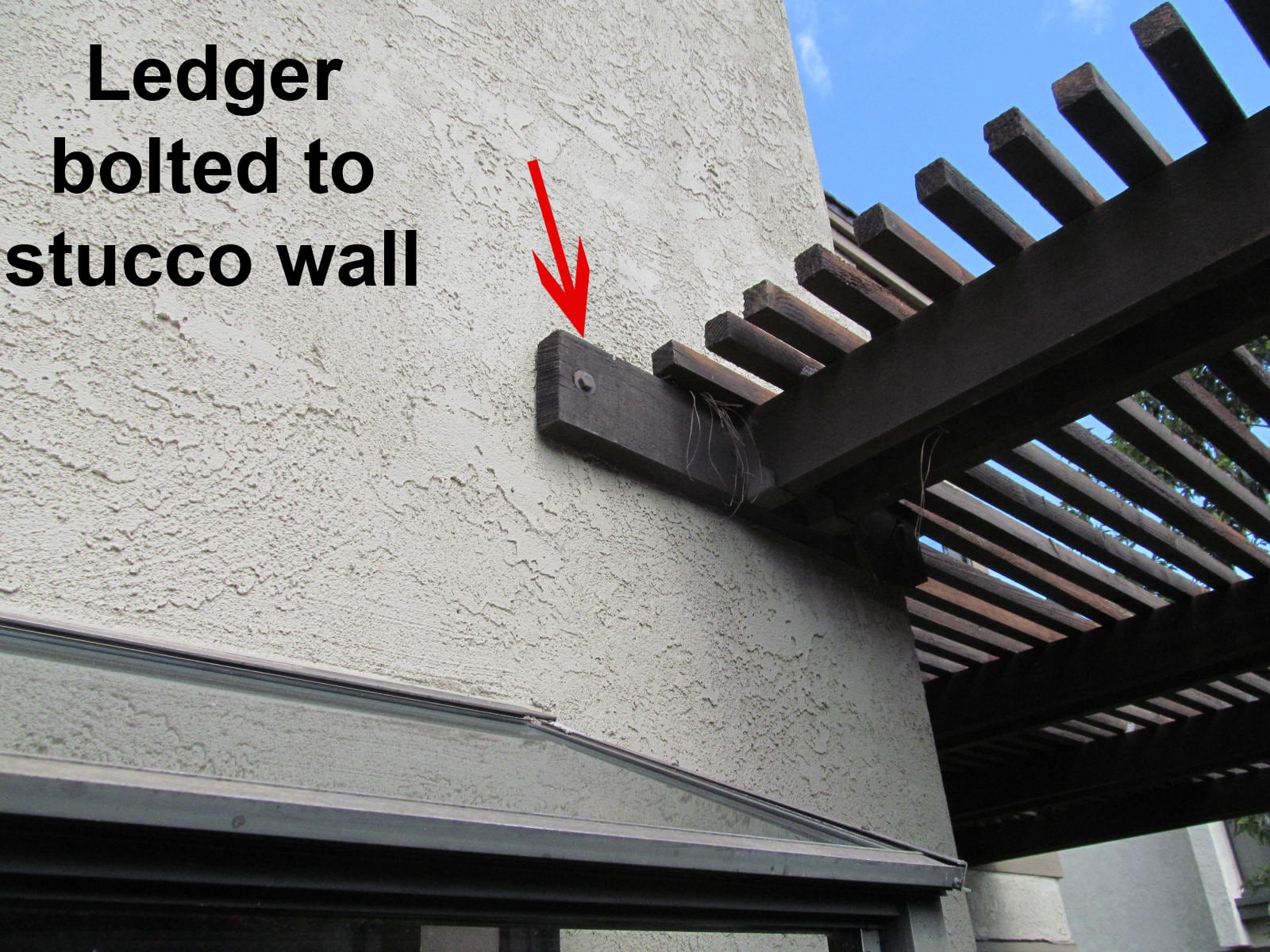
If no flashing, then a ledger may leak at a bolt or lag screw connection point
Generally, if a ledger board is installed when the home is being constructed, it will have metal flashing over the ledger board that prevents water from getting between the wood ledger and the homes cladding (siding). If the ledger is added after the home is built, it often is not flashed properly and then water gets between the ledger and the siding.
When this happens, the water may run down this space and when it gets the hole where the lag screw or bolt is, then it seeps into the wall around where the lag screw or bolt, penetrates the wall. Thus, moisture in the wall and possible damage.
Most contractors try to cure this moisture intrusion by caulking the top area of the ledger board, hoping no moisture will find its way in. However, caulking often ages, dries out and over time often fails.
Decks and Balconies may have a leger boards
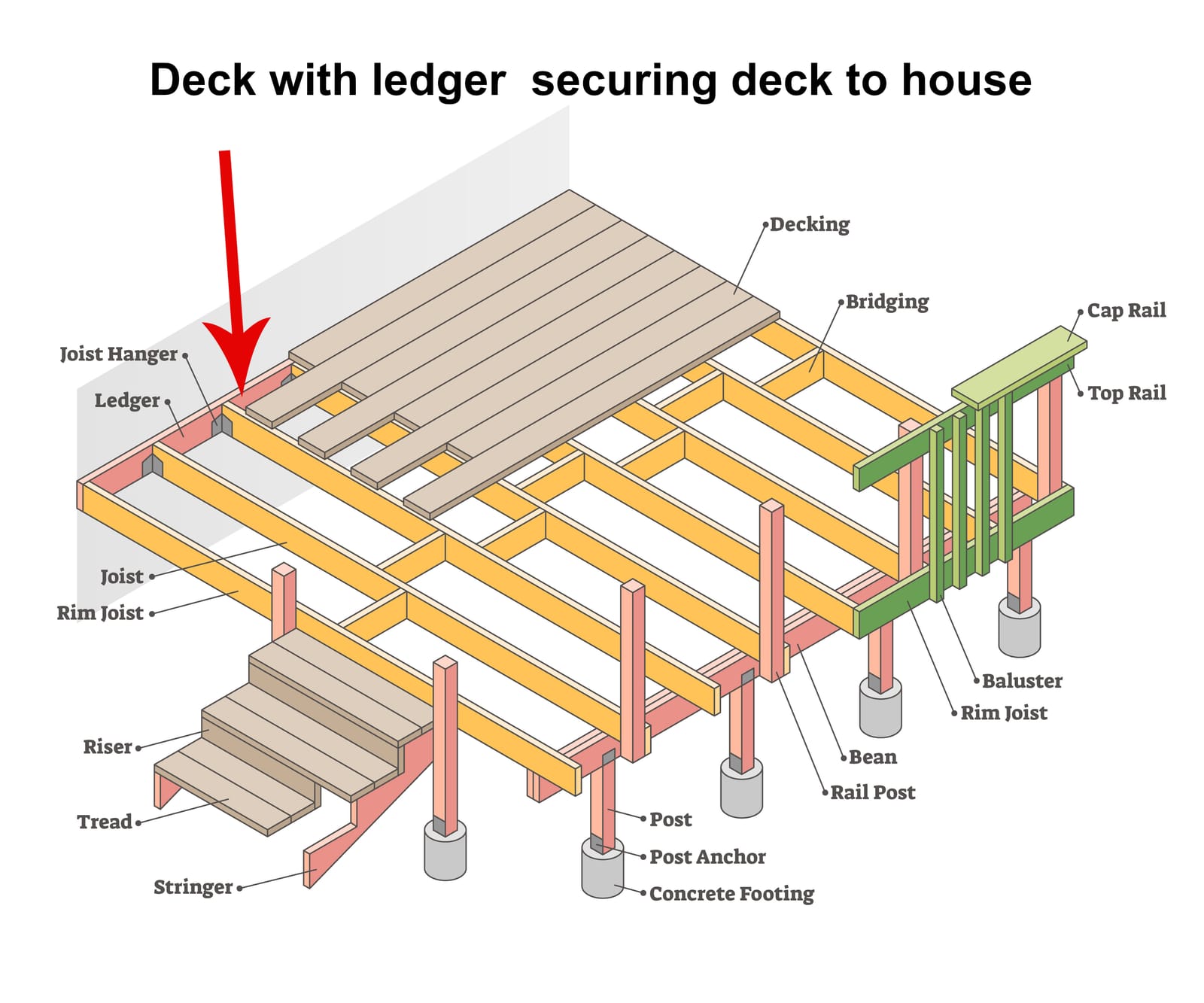
There are some decks and balconies that have ledger boards connected to a stucco wall that helps to carry part of the weight of the deck or balcony, as well as, helping hold the deck or balcony to the stucco wall.
Watch for puddling water or damage to a balcony’s waterproofing coat
Balconies, depending on their design, may have areas where the method of attachment is a ledger board or there is missing or improper flashing. Take a couple of minutes and carefully examine your balcony to see if you spot a pathway for water to enter a wall. Additional, if your balcony has areas where water puddles or the waterproofing is damaged, it would be wise to correct this problem as well.
#5 Transitions between different siding materialsmay cause stucco leaks
Architects when designing a home will often have more than one type of siding materials on the home. Doing so makes the home unique, aesthetically appealing and differentiates it from other homes. Mixing siding materials can help accentuate the features of the home and helps create various styles, i.e. Modern, Contemporary, Mediterranean, Tudor, etc. Stucco is one of the most popular materials that architects use to achieve their goal in designing a beautiful home.
In the building industry and with architects, the siding is often referred to as the “Cladding.” Where two types of materials meet, it is called a transition point; basically a transition from one type of cladding to another. At these areas the code normally requires some form of flashing or special seal so that water will not penetrate through the joint between the two materials. Caulking of these joints or areas is common, however, over time the caulking may deteriorate, shrink, fall out, or crack. Leaving a gap, crack, or small space for water to get into the wall. Homeowners should carefully check these areas for gaps, stains or damaged flashing once a year, preferably before the rainy season.
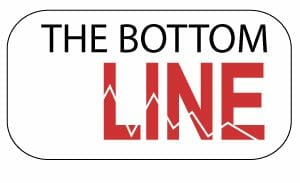
Water can enter a stucco wall in many ways and most people think that cracks is why stucco leaks or has moisture problems. Much of the time they are right, but they can miss some of the other ways that moisture issues come about. Ones that often results in mold, wet insulation, or structural damage.
**Planters. **Planters are frequently overlooked as a possible source of moisture getting into a wall and are often added by a homeowner after the home is built. One who does not know the building code or realizes the damage a planter can cause.
Light Fixtures. Usually, the only time an exterior light fixture gets any attention is when a bulb burns out or the owners want to upgrade the fixture to one that they feel will make the home look more stylish or beautiful.
Trees, Shrubbery, Ivy, and clinging vines on stucco walls. Little thought is given to the idea that Ivy, clinging vines, shrubbery and trees are the culprits in moisture issues with stucco walls. They make the house look so charming and beautiful.
Ledgers. News reports of people being injured or killed often explain that a deck or balcony pulled away from the structure due to rotted wood, ledgers failing, improper flashing, or failure to follow building code requirements or lack of proper maintenance.
Transitions. Many homes have more than one type of siding and the area (joint) where they meet, is often overlooked when checking for moisture intrusion into a wall.